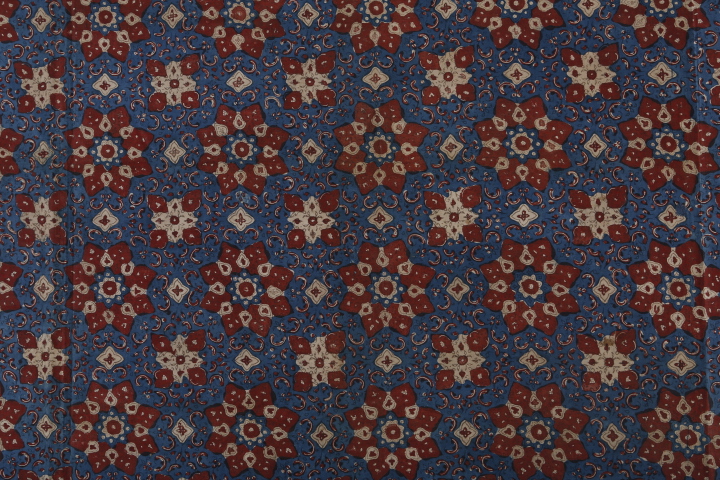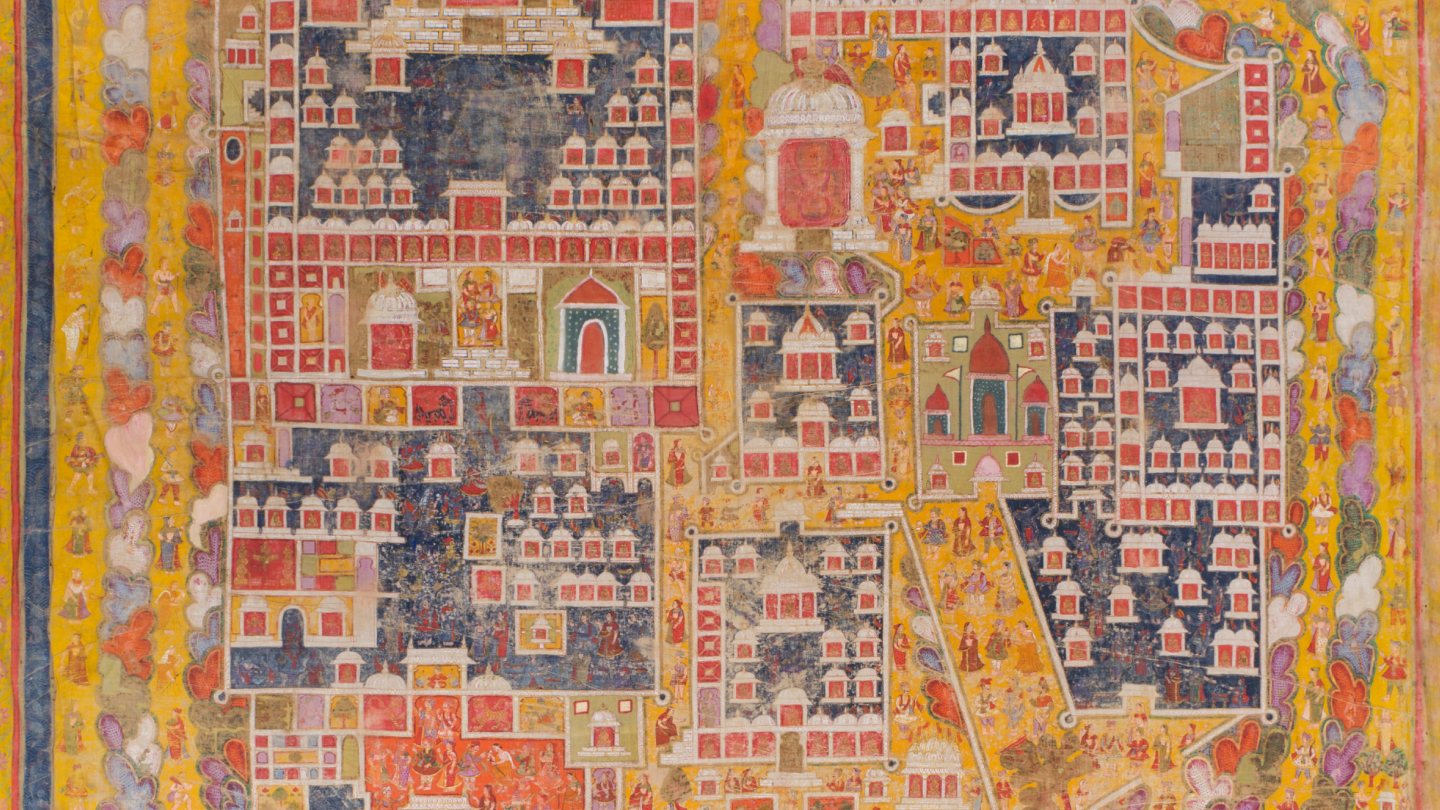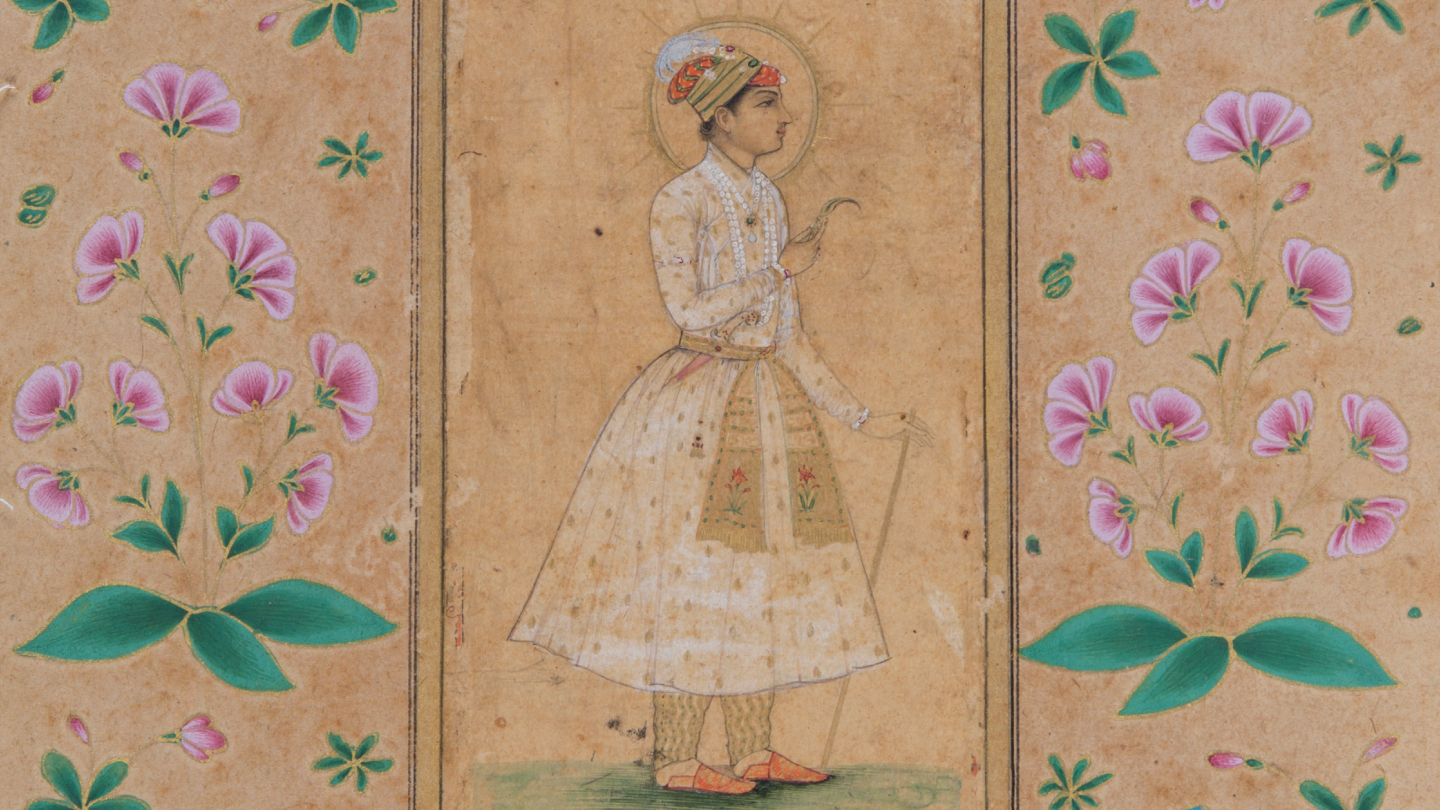Blogs
A Stitch in Time
Kimi Dangor
These Indian designers’ love affair with the humble Kantha stitch is as much a tale of empowerment and sustainability as it is of contemporising tradition.
KOLKATA-based designer Paromita Banerjee’s introduction to Kantha came in early childhood, courtesy her mother and grandmother’s intricately embroidered sarees and other cherished keepsakes: “Every newborn in the family would be swaddled in a handstitched cloth, painstakingly sewed together by my mother or the nanny, who would sit in a corner and join layers of fabric together with the simple “sujani kantha” running stitch. Perhaps, what drew me to Kantha was the fact that it was associated with my memories of growing up,” she recalls.
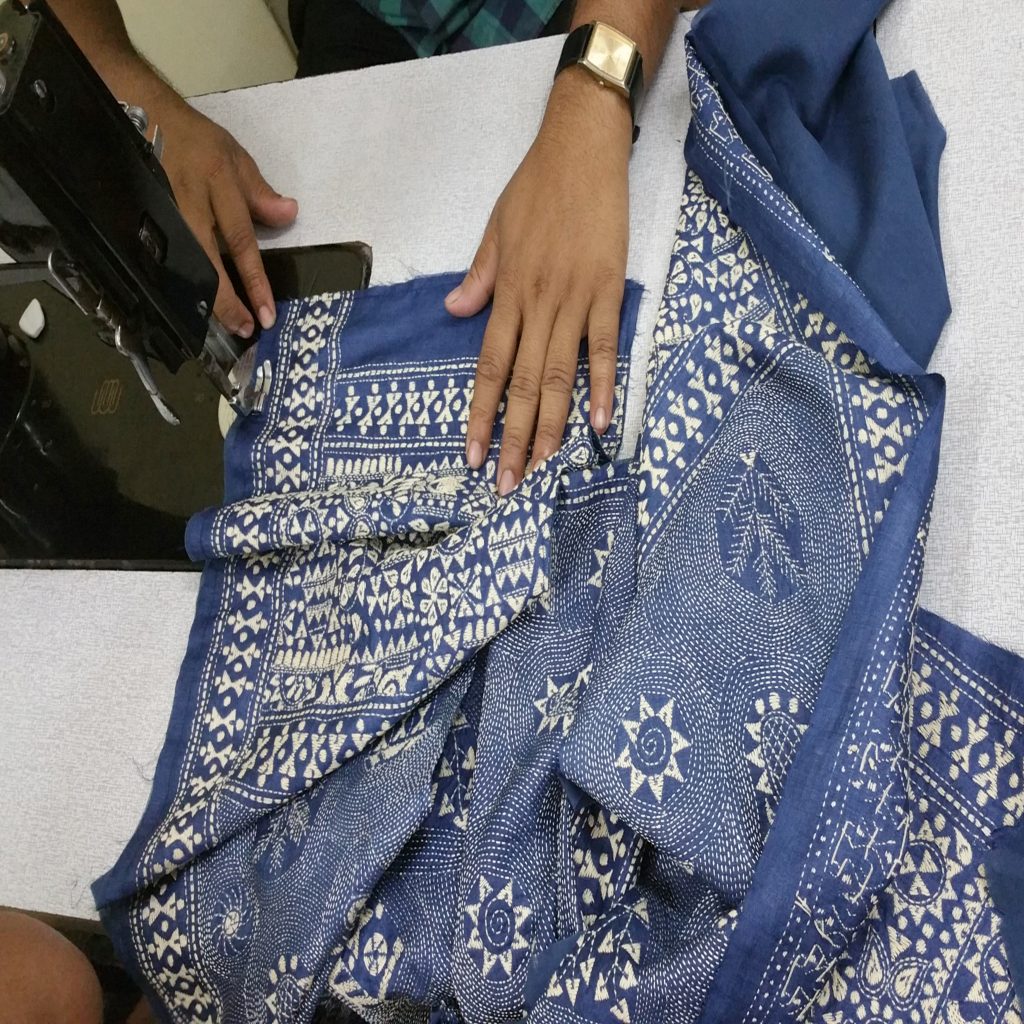 Sewing a garment in the studio where kantha stitch is used as a surface texture. Image Courtesy: Paromita Banerjee
Sewing a garment in the studio where kantha stitch is used as a surface texture. Image Courtesy: Paromita Banerjee
Today, her 12-year-old eponymous label is committed to the Japanese ideology of ‘Boro’, a concept of layering and reworking textiles, that she likes to translate as “too good to waste”. And the Kantha stitch plays a pivotal role. “When we delved into the concept of Boro back in the early 2012s, we wanted to use Kantha as the technique to join layers or pieces of cloth (leftovers and fabric remnants) with the simple running stitch. Now, it’s a natural extension of the brand, and we use Kantha as a functional element, and not necessarily only as a decorative element for surface embellishment, in keeping with our belief system of continuation and not cessation,” says Banerjee.
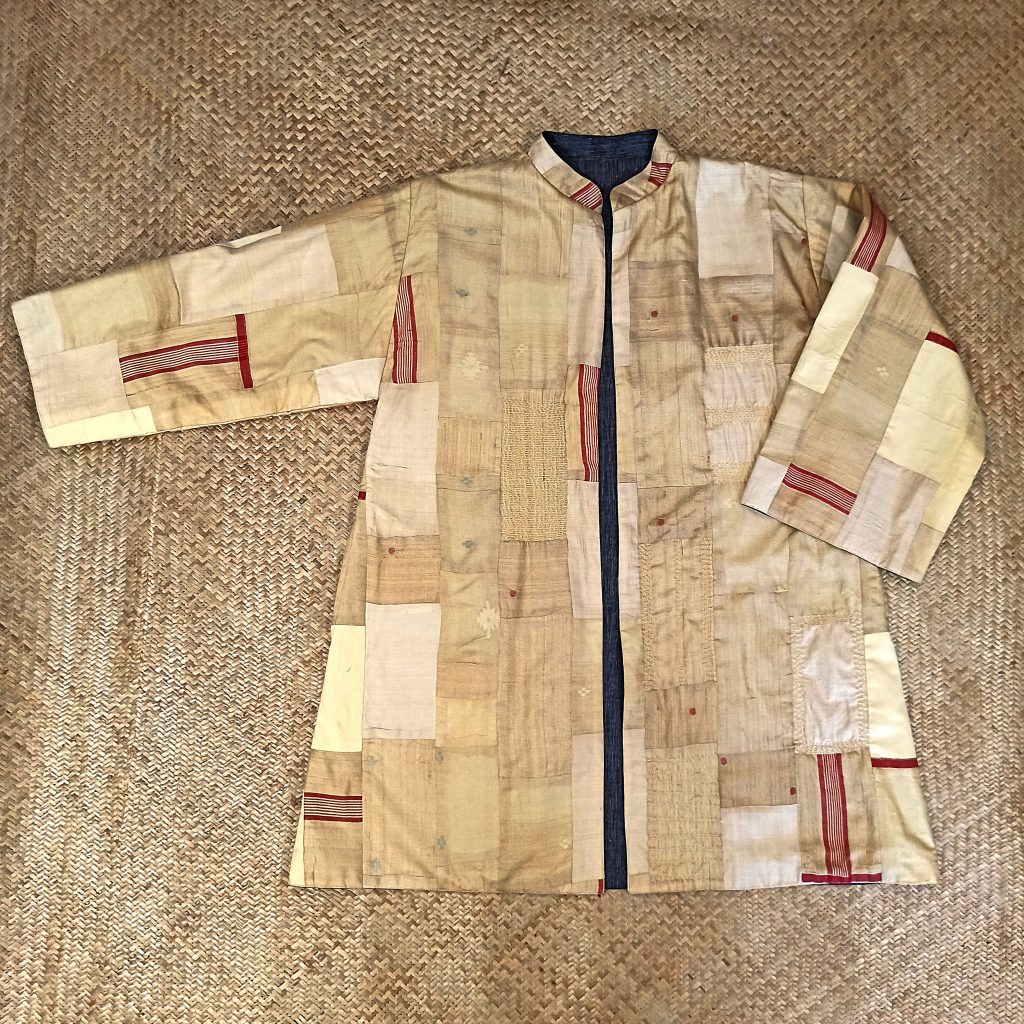 Tussar Boro kimono uses small running stitches as a texture element all through and also to join the layers. Image Courtesy: Paromita Banerjee
Tussar Boro kimono uses small running stitches as a texture element all through and also to join the layers. Image Courtesy: Paromita Banerjee
Whether you know it as Bengal’s kantha stitch, Bihar’s sujani embroidery or Japan’s Boro technique — the humble running stitch, in its various avatars and iterations, has emerged as a formidable tool in the storyboard of green design. Even as fashion labels across the world attempt to harness waste, many are turning to this age-old solution for upcycling, optimising and repairing. In fashion parlance, Kantha, and by association patchwork, may be “having a moment”, but there’s no denying that for many Indian designers these concepts are cornerstones of their brand philosophy, far more deep-rooted than transitional trends and social media buzzwords.
Textile savants David Abraham and Rakesh Thakore of Abraham & Thakore have been using minimal and monochromatic renditions of Kantha to amplify their pared down aesthetic for years. Ruchika Sachdeva of Bodice’s tone-on-tone Kantha interpretation ties in neatly with her understated design language, marrying “tradition and technology”. While Aneeth Arora of Pero, Anavila Misra and Yadvi Agarwal of Yavi have also used Kantha in conjunction with other Indian crafts, Swati Kalsi’s single-minded engagement with the Sujani style running stitch is almost art-like in interpretation, using garments as a canvas, testimony to the simple, yet versatile nature of the craft.
It is this dichotomy of a simple stitch providing complex artistic interpretations, that first attracted Karishma Shahani Khan of Ka-Sha to this unsung technique. “There is certain organic beauty in it, which comes from the fact that it is not mounted on a ‘khaat’ (frame). The length of the Kantha, the distance between the stitches, the placement and the way the women artisans hold it in their laps while working, adds so much texture to the finished product,” says Shahani Khan, who largely works with a ‘godhri’ stitching women’s group in Pune. With her mainline label Ka-Sha as well as her upcycling sister concern Heart-To-Haat, the designer is hoping to increase processes that involve the touch of a human hand through Kantha. “We don’t believe in conspicuous consumption. Rather, the idea is to buy something that lasts for a very long time. Our Kantha pieces are upcycled a hundred per cent and they are completely reversible. This ensures that the person can wear the quilted pieces two ways,” she says.
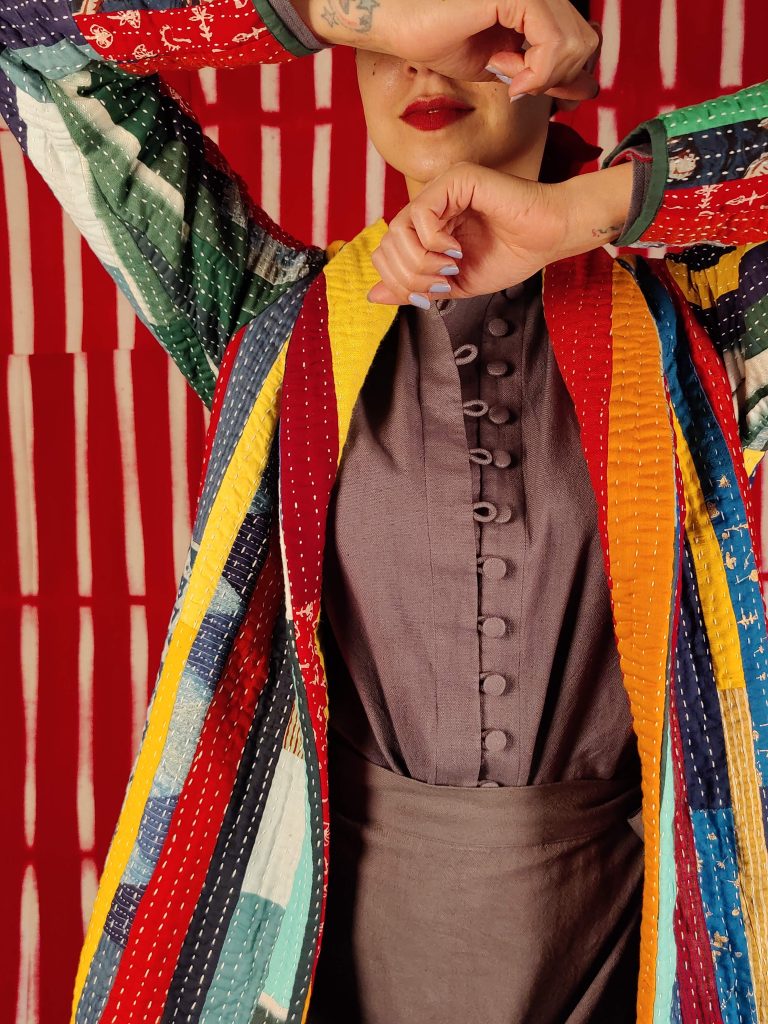 The hand-quilted and upcycled reversible patchwork Neena jacket, Image Courtesy: Ka-Sha
The hand-quilted and upcycled reversible patchwork Neena jacket, Image Courtesy: Ka-Sha
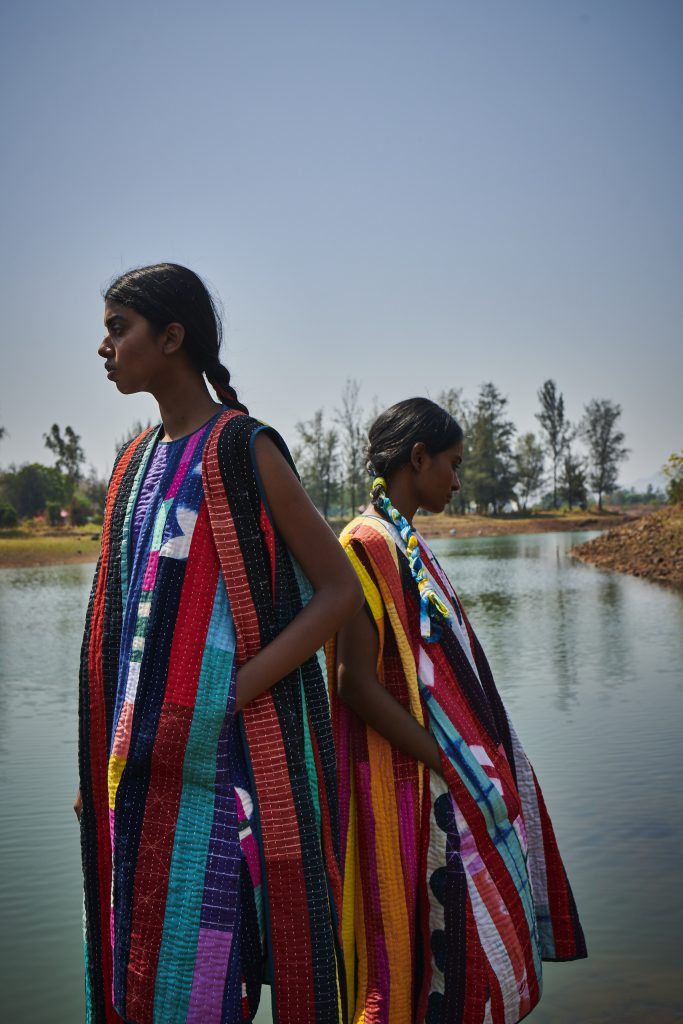 The colourful Tulsi jacket is hand-quilted and reversible with Kantha stitches used in the construction of the piece. Image Courtesy: Ka-Sha
The colourful Tulsi jacket is hand-quilted and reversible with Kantha stitches used in the construction of the piece. Image Courtesy: Ka-Sha
For Shani Himanshu and Mia Morikawa, co-founders of 11.11/ eleven eleven, the technique echoes the brand’s ‘seed to stitch’ philosophy. “Engaging Kantha and patchwork as a design decision reflects a zero-waste approach — making sure that each and every last piece of fabric is assigned value,” says Morikawa, whose label works with Kantha artisans from Kutch, Gujarat. “The process of working with ladies to create Kantha panels of fabric, which then get made into home textiles and garments, re-centres remnant fabric while simultaneously recentering marginal communities, including them in both the domestic and international value chain,” she says. It was this philosophy that saw the brand continue to work on a home textile line with their artisan partners in remote rural areas post the turmoil of the 2020 lockdown. The duo reprised their indigo Kantha quilt, made from fabric remnants and their artisans worked from the safety of their homes, producing a line that will soon launch on the Mr. Porter and GOODEE platform.
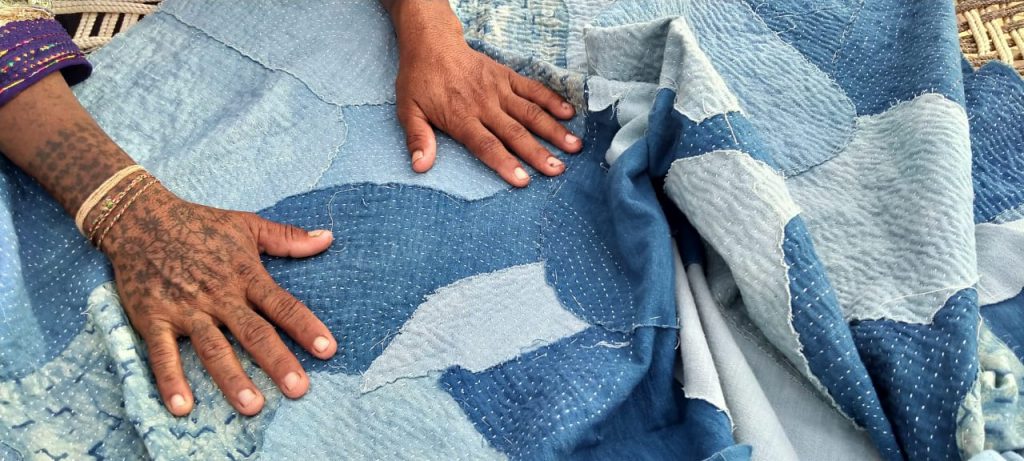
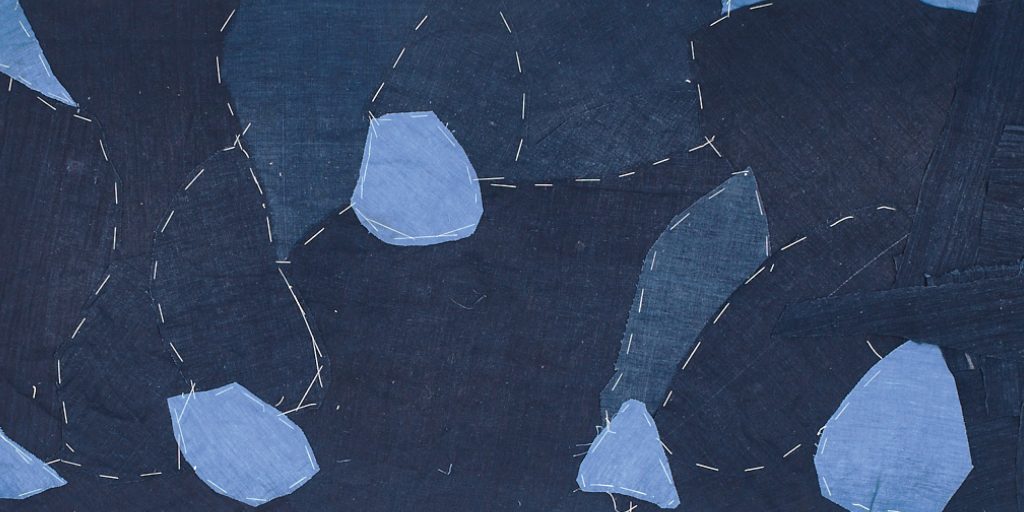
11.11’s take on Kantha re-engages remnant fabric left over from the garment making process by hand quilting curved patches together, reflecting the movement of ripples on water. Image Courtesy: 11.11
This artisan-first approach also informs the works of Ruchi Tripathi and Jaya Bhatt of Indigene, who have made Kantha an intrinsic part of their decade-old label’s design language. “Our work is an amalgamation of different recycling philosophies like Kantha, the ‘gudri’ textiles of Bihar, and Gujarat and the Boro technique of Japan,” says Tripathi. Resultantly, Indigene’s work with migrant women artisans in their hometown Delhi — and occasionally with a cluster in Ranchi, Jharkhand — is a mutually beneficial process. “Our continuous use of Kantha — not just the craft, but the idea to engage these women, who depend on it for livelihood — pushed us to use the embroidery skill more. We believe that providing sustainable work is a very important aspect of sustainability itself,” says Tripathi. The duo has collaborated closely with their artisans to fit Kantha into their design language, innovating with every collection.
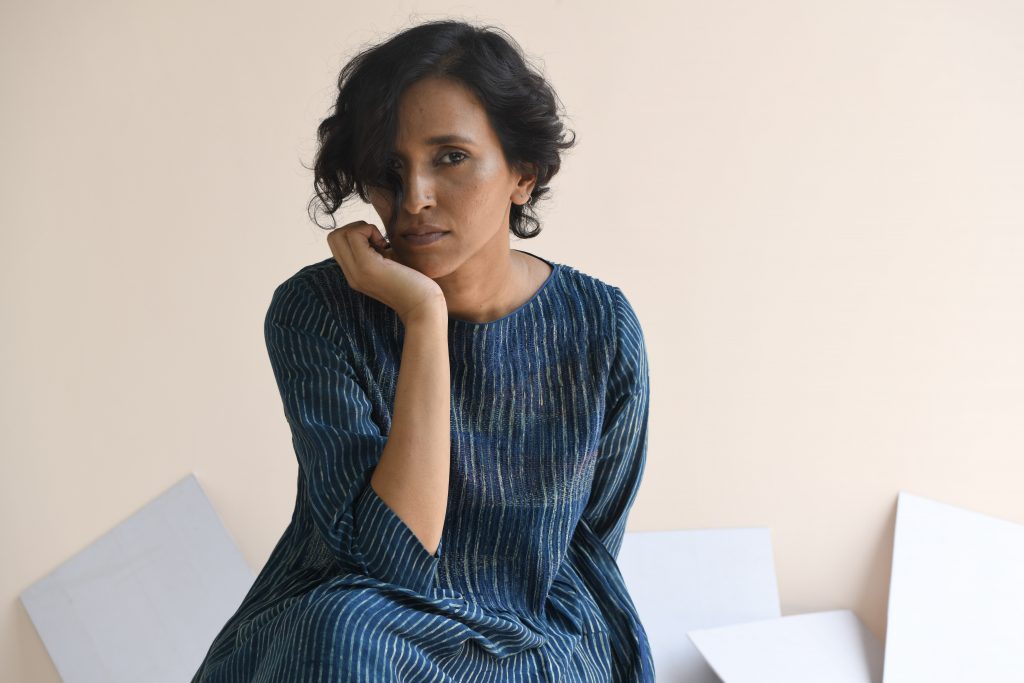 Kantha used in colour gradation to create a textured look on a pintuck Chanderi dress. Image Courtesy: Indigene
Kantha used in colour gradation to create a textured look on a pintuck Chanderi dress. Image Courtesy: Indigene
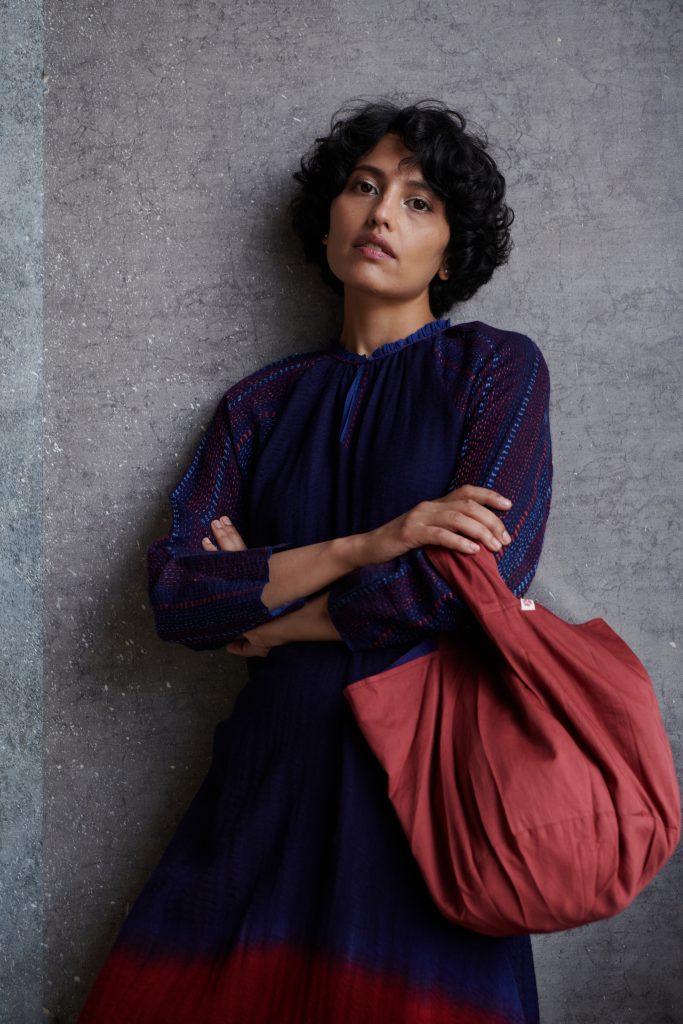 Kantha stitches in varied thickness and play of colour accentuate the sleeves of a wool dip-dyed dress. Image Courtesy: Indigene
Kantha stitches in varied thickness and play of colour accentuate the sleeves of a wool dip-dyed dress. Image Courtesy: Indigene
Much like Banerjee, who, with the aid of her in-house artisans, has used Kantha to stretch her product repository to include kimonos, ‘khaata’ notebooks, baby quilts and bags. “If we add or subtract layers the feel and functionality of the fabric changes. And though it’s a time-consuming and intricate process, the beauty of it is that once a person has learnt the basics, you can explore and experiment with it. A lot of our women artisans try different styles and that works out wonderfully for us, because who doesn’t love experiments?” says Shahani-Khan.
Kimi Dangor is a Mumbai and Goa-based fashion editor and consultant, with more than two decades of fashion chronicling under her belt. She believes fashion is as much about style and ever-changing trends as it is about the cultural, sociological and anthropological study of people and the times they live in.

